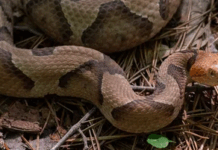Four men who founded Cawker City in 1870 in north-central Kansas played poker against each other to win the right to name it.
The winner, Col. E.H. Cawker, named the city after himself.
A community of about 450 people in Mitchell County, Cawker City is perhaps best known for being home of the world’s largest ball of twine.
It is among numerous incorporated cities in Kansas with names that are interesting and unique. Following are 20 others.
Topeka means ‘a good place to dig potatoes’
The name of the state’s capital city — Topeka, located in Shawnee County in northeast Kansas — comes from an Ioway Tribe word meaning “a good place to dig potatoes.” That name was chosen by founders of the city, which has a population of about 126,000.
Cherokee got that name by mistake
A city of about 600 in southeast Kansas, Cherokee’s residents incorporated it under that name because they thought it was located in Cherokee County, the city’s website says. Actually, the city of Cherokee was — and still is — in Crawford County.
Dexter was named after a horse
Dexter, a city with a population of about 225 in Cowley County in southeast Kansas, was named after a famous and successful racing trotter horse owned by Robert Bonner of New York, says the city’s website.
Grenola was created by combining ‘Greenfield’ and ‘Canola’
Grenola, population 151, was formed after the Atchison, Topeka & Santa Fe Railway built a railroad halfway between the rival communities of Greenfield and Canola, which stood three miles apart in Elk County in southeast Kansas. Residents of those communities responded by establishing a new town along the railroad, naming it “Grenola” and moving there, Frank Wilson Blackmar wrote on page 796 of a an encyclopedia of the state’s history published in 1912.
Great Bend got that name for being located at a ‘great bend’ in a river
Great Bend, a city of about 15,000 people in Barton County in central Kansas, received that name because it is located on a “great bend” in the Arkansas River, says page 145 of a Kansas Historical Society report published in 1916.
Council Grove got that name after an agreement was reached at a council there between American settlers and the Osage Nation, allowing settlers’ wagon trains to pass westward through the area on the Santa Fe Trail, said the website of the National Park Service. Pioneers gathered at a grove of trees, so their wagons could band together for their trip west, it said.
Osawatomie was named by combining ‘Osage’ and ‘Potawatomi’
Osawatomie, city of about 4,300 people in Miami County in east-central Kansas, got its name by combining the names of the Osage and Potawatomi tribes, says the city’s website.
Argonia was named after heroes in Greek mythology
Argonia, a city with a population of about 450 in Sumner County in south-central Kansas, was named after the “Argonauts,” a group of heroes in Greek mythology whose mission was to find the legendary Golden Fleece, the city website says. Argonia residents in 1887 elected Susanna Madora Salter as the first woman mayor in the U.S.
Gas got its name from its area’s abundance of natural gas
Gas, a city of about 475 people in Allen County in southeast Kansas, got its name from the abundance of natural gas found in the area where it’s located, says the city’s website.
Junction City got that name because it’s located at a junction of two rivers
Junction City, a city of about 23,000 in Geary County in north-central Kansas, got that name because it was established at the junction of the Republic and Smoky Hill rivers, where the Kansas River is formed, according to the website of Junction City Main Street, an organization created to spur economic development in that city’s downtown area.
Liberal was where an early settler became known for giving away water
Liberal, a city of about 20,000 in Seward County in southwest Kansas, got that name after an early settler there became known for giving away water to thirsty travelers, who would respond, “That’s very liberal of you,” said the city’s website. Liberal is known for taking part each Shrove Tuesday in a friendly competition with the city of Olney, England, in which women of both communities run 415 yards down the streets flipping pancakes.
Olathe’s name came from Shawnee Tribe word for ‘beautiful’
The name of Olathe, which has a population of about 141,000 and is located in Johnson County in northeast Kansas, comes from the Shawnee Tribe word for “beautiful,” says the city’s website.
Kanorado combines ‘Kansas’ and ‘Colorado’
Kanorado, a city of about 150 in Sherman County in northwest Kansas, was given that name — a combination of “Kansas and Colorado” — because it is located right along the Kansas/Colorado state line, according to the “Travel Kansas” website.
El Dorado means ‘a place of fabulous wealth or opportunity’
“El Dorado,” exclaimed one of its founders, Joseph Cracklin, upon first seeing the site of that community, which is now home to about 13,000 people in Butler County in south-central Kansas, says the city’s website. “El Dorado” is Spanish for “a place of fabulous wealth or opportunity.”
Abbyville was named after baby Abby
Abbyville, population 83, is in Reno County in south-central Kansas. It is named after Abby McLean, the first baby born there.
Neodesha named after Osage Tribe word meaning ‘where waters meet’
The name of Neodesha, a city with a population of about 2,300 at the confluence of the Verdigris and Fall rivers in Wilson County in southeast Kansas, comes from an Osage Tribe word meaning “where waters meet,” says the city website.
Emporia was named after an ancient coastal city in northern Africa
Emporia, a city of about 24,000 people in Lyon County in east-central Kansas, was named after a flourishing ancient market center that was located on the northern coast of Africa and had been founded by the Greeks, says the website of that city’s Chamber of Commerce.
Stockton got that name in an effort to attract a railroad
Stockton, a city with a population of about 1,480 in Rooks County in north-central Kansas, got that name because stock raising was its only industry at the time and residents thought being named “Stockton” would help attract a railroad there, says a website detailing the history of that county. “The hope that the town would become a livestock center never materialized,” the site said. “However, the coming of the railroad would prove to be essential in maintaining Stockton as a viable community.”
Paxico got anglicized version of name of Native American medicine man
Paxico, a city of about 210 people in Wabaunsee County in northeast Kansas, was given a name that was an anglicized version of “Pashqua,” which was the name of a Native American medicine man who lived in the area on the banks of Mill Creek, says the Travel Kansas website.
Alton received that name to replace ‘Bull City’
A historical marker at Alton, population about 100 in Osborne County in north-central Kansas, tells how Hiram C. Bull and Lyman T. Earl set out from Cawker City and established that community in 1870, with a coin toss resulting in its initially being named Bull City instead of Earlville. Bull and two other men were killed in 1879 by Bull’s pet elk. Some residents subsequently sought torename the city “Alton,” after Alton, Illinois. The historical marker says, “So after a legal petition to change the name failed, a fraudulent petition was sent to Washington. D.C., with the signatures cut from a popular road petition and pasted to the name change petition.” The city’s name was then changed, it says.
As reported in the Topeka Capitol Journal




